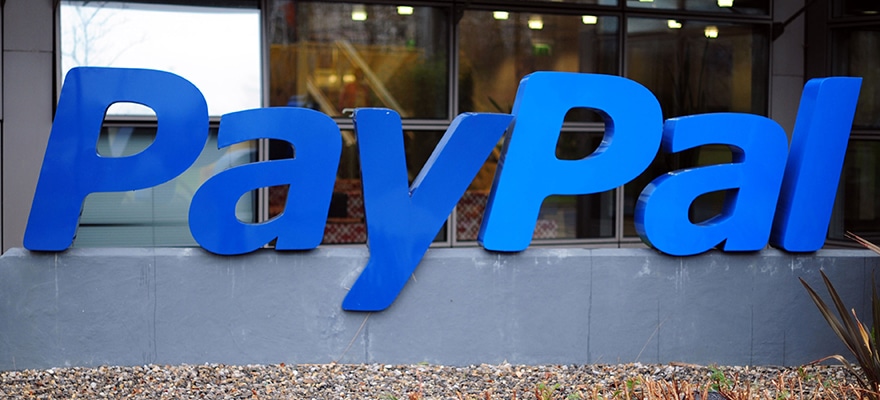bitFlyer Europe Integrates with Paypal, Allowing 'Nearly Instant' Fiat Deposits
- Traditional payment methods, such as wire transfers, “can often take up to three business days for deposits to clear."

The European arm of cryptocurrency exchange bitFlyer is today announcing integration with global Payments Payments One of the bases of mediums of exchange in the modern world, a payment constitutes the transfer of a legal currency or equivalent from one party in exchange for goods or services to another entity. The payments industry has become a fixture of modern commerce, though the players involved and means of exchange have dramatically shifted over time.In particular, a party making a payment is referred to as a payer, with the payee reflecting the individual or entity receiving the payment. Most commonl One of the bases of mediums of exchange in the modern world, a payment constitutes the transfer of a legal currency or equivalent from one party in exchange for goods or services to another entity. The payments industry has become a fixture of modern commerce, though the players involved and means of exchange have dramatically shifted over time.In particular, a party making a payment is referred to as a payer, with the payee reflecting the individual or entity receiving the payment. Most commonl Read this Term platform Paypal. According to an announcement shared with Finance Magnates, Paypal’s European users can now deposit funds directly to the bitFlyer platform to buy Cryptocurrencies Cryptocurrencies By using cryptography, virtual currencies, known as cryptocurrencies, are nearly counterfeit-proof digital currencies that are built on blockchain technology. Comprised of decentralized networks, blockchain technology is not overseen by a central authority.Therefore, cryptocurrencies function in a decentralized nature which theoretically makes them immune to government interference. The term, cryptocurrency derives from the origin of the encryption techniques that are employed to secure the netw By using cryptography, virtual currencies, known as cryptocurrencies, are nearly counterfeit-proof digital currencies that are built on blockchain technology. Comprised of decentralized networks, blockchain technology is not overseen by a central authority.Therefore, cryptocurrencies function in a decentralized nature which theoretically makes them immune to government interference. The term, cryptocurrency derives from the origin of the encryption techniques that are employed to secure the netw Read this Term.
bitFlyer’s European arm launched in January 2018 as a fully owned subsidiary of bitFlyer, Inc., which is one of Japan’s longest-standing cryptocurrency exchanges. bitFlyer says that it is the only cryptocurrency exchange that is regulated in Japan, the US and Europe combined.
Paypal Will Enable Near-Instant Deposits of Fiat onto bitFlyer
The addition of Paypal onto the platform means that bitFlyer users can deposit fiat currency into their accounts almost instantly. Traditional payment methods, such as wire transfers, “can often take up to three business days for deposits to clear,” said a statement shared with Finance Magnates. “With PayPal, deposits are typically nearly instant.”

bitFlyer Europe chief operating officer Andy Bryant.
Moreover, bitFlyer said that the integration with Paypal is the platform’s latest move toward making cryptocurrency trading more accessible around the globe.

Jacek Bastin, Business Strategy Manager at bitFlyer Europe.
And indeed, Paypal is one of the most common payment platforms in Europe: “the cryptocurrency space is still in its infancy, and despite the ecosystem growing, the industry is still daunting for newcomers,” said Jacek Bastin, Business Strategy Manager at bitFlyer Europe.
“Given that approximately a third of European e-commerce payments are being processed through PayPal, we are more than thrilled to provide users with a deposit method they know and rely upon. The process to deposit through PayPal is entirely frictionless, secure and reliable, with users to be credited near to instantly.
“We’re proud to offer users the opportunity to use their PayPal accounts to deposit funds for purchasing crypto,” bitFlyer Europe chief operating officer, Andy Bryant said.
“The integration of PayPal adds a new funding source for bitFlyer users. Thousands of bitFlyer users already use PayPal for fiat transactions. Now, users can purchase bitcoin and other cryptocurrencies in the same way too.”
In June, Finance Magnates reported that bitFlyer formed a partnership with Brave Software International SEZC, a subsidiary of Brave Software. bitFlyer was Brave’s first partner in the crypto asset wallet space in Japan.
The European arm of cryptocurrency exchange bitFlyer is today announcing integration with global Payments Payments One of the bases of mediums of exchange in the modern world, a payment constitutes the transfer of a legal currency or equivalent from one party in exchange for goods or services to another entity. The payments industry has become a fixture of modern commerce, though the players involved and means of exchange have dramatically shifted over time.In particular, a party making a payment is referred to as a payer, with the payee reflecting the individual or entity receiving the payment. Most commonl One of the bases of mediums of exchange in the modern world, a payment constitutes the transfer of a legal currency or equivalent from one party in exchange for goods or services to another entity. The payments industry has become a fixture of modern commerce, though the players involved and means of exchange have dramatically shifted over time.In particular, a party making a payment is referred to as a payer, with the payee reflecting the individual or entity receiving the payment. Most commonl Read this Term platform Paypal. According to an announcement shared with Finance Magnates, Paypal’s European users can now deposit funds directly to the bitFlyer platform to buy Cryptocurrencies Cryptocurrencies By using cryptography, virtual currencies, known as cryptocurrencies, are nearly counterfeit-proof digital currencies that are built on blockchain technology. Comprised of decentralized networks, blockchain technology is not overseen by a central authority.Therefore, cryptocurrencies function in a decentralized nature which theoretically makes them immune to government interference. The term, cryptocurrency derives from the origin of the encryption techniques that are employed to secure the netw By using cryptography, virtual currencies, known as cryptocurrencies, are nearly counterfeit-proof digital currencies that are built on blockchain technology. Comprised of decentralized networks, blockchain technology is not overseen by a central authority.Therefore, cryptocurrencies function in a decentralized nature which theoretically makes them immune to government interference. The term, cryptocurrency derives from the origin of the encryption techniques that are employed to secure the netw Read this Term.
bitFlyer’s European arm launched in January 2018 as a fully owned subsidiary of bitFlyer, Inc., which is one of Japan’s longest-standing cryptocurrency exchanges. bitFlyer says that it is the only cryptocurrency exchange that is regulated in Japan, the US and Europe combined.
Paypal Will Enable Near-Instant Deposits of Fiat onto bitFlyer
The addition of Paypal onto the platform means that bitFlyer users can deposit fiat currency into their accounts almost instantly. Traditional payment methods, such as wire transfers, “can often take up to three business days for deposits to clear,” said a statement shared with Finance Magnates. “With PayPal, deposits are typically nearly instant.”

bitFlyer Europe chief operating officer Andy Bryant.
Moreover, bitFlyer said that the integration with Paypal is the platform’s latest move toward making cryptocurrency trading more accessible around the globe.

Jacek Bastin, Business Strategy Manager at bitFlyer Europe.
And indeed, Paypal is one of the most common payment platforms in Europe: “the cryptocurrency space is still in its infancy, and despite the ecosystem growing, the industry is still daunting for newcomers,” said Jacek Bastin, Business Strategy Manager at bitFlyer Europe.
“Given that approximately a third of European e-commerce payments are being processed through PayPal, we are more than thrilled to provide users with a deposit method they know and rely upon. The process to deposit through PayPal is entirely frictionless, secure and reliable, with users to be credited near to instantly.
“We’re proud to offer users the opportunity to use their PayPal accounts to deposit funds for purchasing crypto,” bitFlyer Europe chief operating officer, Andy Bryant said.
“The integration of PayPal adds a new funding source for bitFlyer users. Thousands of bitFlyer users already use PayPal for fiat transactions. Now, users can purchase bitcoin and other cryptocurrencies in the same way too.”
In June, Finance Magnates reported that bitFlyer formed a partnership with Brave Software International SEZC, a subsidiary of Brave Software. bitFlyer was Brave’s first partner in the crypto asset wallet space in Japan.
